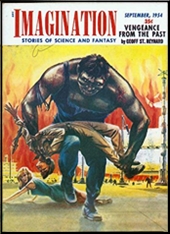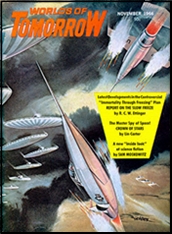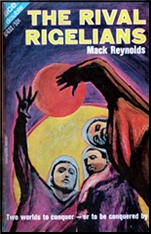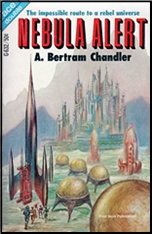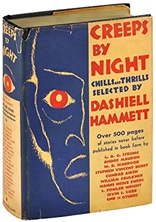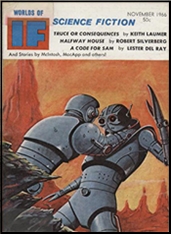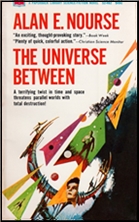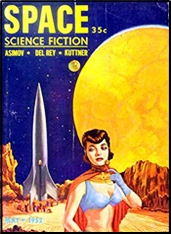Fri 15 Jan 2021
Diary Review: RAYMOND J. HEALY & J. FRANCIS McCOMAS, Editors – Famous Science-Fiction Stories: Adventures in Time And Space, Part 4.
Posted by Steve under Diary Reviews , Science Fiction & Fantasy[2] Comments
RAYMOND J. HEALY & J. FRANCIS McCOMAS, Editors – Famous Science-Fiction Stories: Adventures in Time And Space. The Modern Library G-31; hardcover, 1957, xvi + 997 pages. First published as Adventures in Time in Space, Random House, hardcover, 1946. Bantam F3102, paperback, 1966, as Adventures in Time and Space (contains only 8 stories). Ballantine, paperback, 1975, also as Adventures in Time and Space.
Part 3 can be found here.
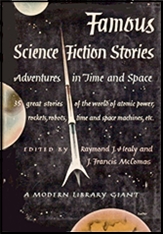
LEWIS PADGETT “Time Locker.†Galloway/Gallagher #1. Novelette. This time Galloway (the prototype of Gallagher) invents a locker which leads into another space-time continuum and the usual type of plot-juggling. (4)
Update: First published in Astounding SF, January 1943. First reprinted in this anthology. Also reprinted in The Best Time Travel Stories of the 20th Century, edited by Martin H. Greenberg & Harry Turtledove (Del Rey / Ballantine, trade paperback, 2005). First collected in Robots Have No Tails (Gnome Press, hardcover, 1952). Henry Kuttner’s wife C. L. Moore may have collaborated with him on this story. This is the second story by “Lewis Padgett†in this anthology. (Follow the link above.) I haven’t been reading as much SF lately as I should have, so I don’t know if anyone in the field today is writing anything as funny as a good deal of what Kuttner wrote back in the 1940s.
CLEVE CARTMILL “The Link.†Short story. The first step of man above the ape level on the evolutionary ladder may have happened this way, but it’s not likely. (1)
Update: First published in Astounding SF, August 1942. First reprinted in this anthology, then later in Political Science Fiction: An Introductory Reader, edited by Martin Harry Greenberg & Patricia S. Warrick (Prentice-Hall, trade paperback, 1974). From Wikipedia: “He [Cartmill] is best remembered for what is sometimes referred to as ‘the Cleve Cartmill affair,’ when his 1944 story ‘Deadline’ attracted the attention of the FBI by reason of its detailed description of a nuclear weapon similar to that being developed by the highly classified Manhattan Project.â€
MAURICE A. HUGI “Mechanical Mice.†Short story.†A time machine leads to the construction of a world-destroyer. Too old. (0)
Update: First published in Astounding SF, January 1941. First reprinted in this anthology and (among others) Classic Science Fiction: The First Golden Age, edited Terry Carr (Harper & Row, hardcover, 1978) and The Great Science Fiction Stories Volume 3, 1941, edited by Isaac Asimov, Martin H. Greenberg (DAW Books, paperback, 1980). Hugi perhaps comes closest to being a Little Known Writer as anyone in this anthology, with only a handful of stories to his credit. SF writer Eric Frank Russell is said to have worked extensively with Hugi on this story before it could be accepted for publication.
TO BE CONTINUED.…
